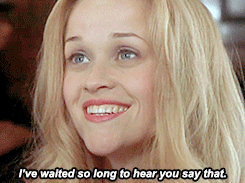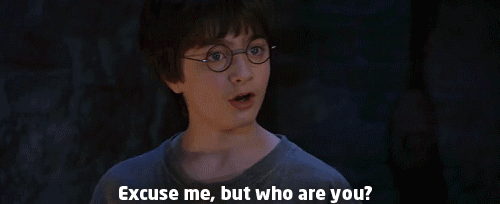When Your H is a B: How To Write an Anti-Heroine
I don’t know about you guys, but I love reading and writing about strong women. And to me, the strongest of them all is the small gray area between a Bad Girl Heroine and a Villain:
THE ANTI-HEROINE
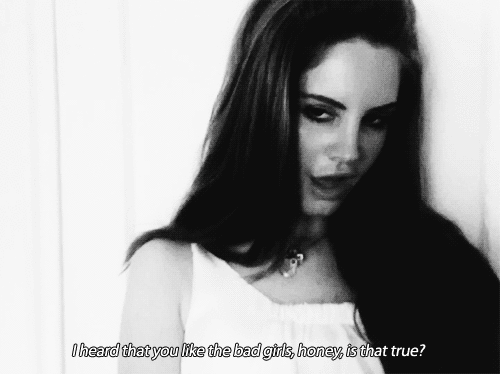
But what really makes an Anti-Heroine, and how do you write her?
Dictionary.com defines anti-heroine as: “a female protagonist, as in a novel or play, whose attitudes and behavior are not typical of a conventional heroine.”
That’s great, dictionary.com. Super helpful. For the rest of us, could we maybe get an answer that isn’t self-repeating?
If one were to Google about how to write an Anti-Heroine, one would find there are a few articles out there that talk about the female version of anti-heroes. Not many, but a few. And when writing my own anti-heroines, these were some of the articles I referred to. They talk about examples of anti-heroines in popular TV and movies, certain identifying traits, and discuss the issues of likeability and why there’s been pushback in the romance genre against anti-heroines, etc.
These are great articles, I gained a ton of knowledge from them, and if you’re looking for examples or are curious about the issues of likability, this is where I’d start.
In this post, however, we’re going to try to cover the How To side of it. :)
Readers Love a Good Anti-Hero, So Why Do They Shun Anti-Heroines? - Emma Jane Unsworth, The Guardian
(Belinda Crawford actually has a whole series of interviews on anti-heroines that is amazing, so be sure to scour her blog for more!)
Now, I’ve written my fair share of anti-heroine characters, some successful and some not. And all of these women were incredibly different, some of them not even human. But they all had certain things in common that I feel pushed them across the transition from just a “Bad Girl Heroine” to an “Anti-Heroine.”
So, back to our initial question: what really defines an Anti-Heroine, and how do we write her successfully?
Let’s get started, shall we?
1. Appropriate Background
This should kind of go without saying, but I’m still saying it anyway: if your Anti-Heroine is a smoking, robbing, butt-kicking, heart-breaking feminazi-badass, that’s dope with me. But if you tell me she is that way “just cuz,” honey, we got a problem.
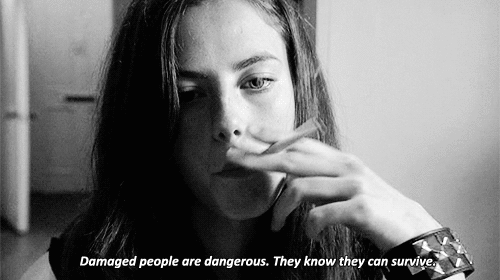
No one starts out inherently evil, and no one gets to Anti-Heroine status without a backstory to warrant it. So it better be there, and it better be a good one.
2. Questionable Morality
That anti in anti-heroine comes from somewhere. So let’s go back to that circular definition: "a female protagonist . . . whose attitudes and behavior are not typical of a conventional heroine.”
So, what defines a typical heroine? Probably someone of high moral character, who makes good choices for the right reasons. Someone the reader aspires to be.
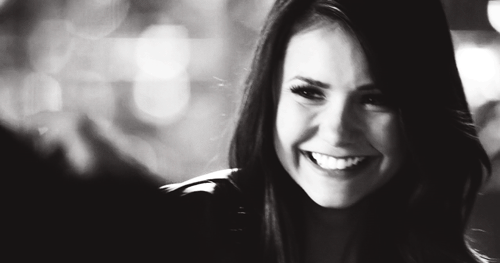
Now flip it.

Someone of low moral character, making bad choices for the wrong reasons, and someone the reader does not aspire to be.
There’s one part there I want to pay particular attention to, and this is one of those things that pushes us from Bad Girl Heroine (BGH) to full-fledged Anti-Heroine (AH): it’s the lack of/low morality that allows the character to make the WRONG choice for the WRONG reasons.
With a BGH, she may make the wrong choice for the RIGHT reasons—she steals the car to save her innocent boyfriend. The action is bad, the reason is good. The AH, however, steals the car to rescue her drug-dealing, abusive, jail-fleeing POS boyfriend. The action is bad, and the reason is worse.
Furthermore, while the BGH will usually backpedal at a decision of questionable morality (showing signs of guilt, hesitation, the weighing of consequences, etc.) the AH will push forward with more strength— trying to justify that she stole the car in the name of love so her bad decision is totally legit.
Nuh-uh. Not legit.
But the AH makes the wrong choices, and for the wrong reasons, and is not someone the reader aspires to be. She is the trainwreck you can’t stop rooting for, even as she betrays you, and the other characters.
3. PISS-Off Test
Okay, so we’ve got a femMC who is making some really bad decisions, and she’s doing it for the wrong reasons. But as she starts to encounter consequences to her actions, how do you keep her coded as an Anti-Heroine instead of just another Bad Girl Heroine?
You watch these five things:
Power, Intent, Selfishness, Secretiveness, and Offense

I call this the PISS-Off Test:
Power:
An Anti-Heroine, much like a Bad Girl Heroine, and even a Villain, has a power source. Maybe she’s really good at plotting revenge like Katherine Pierce on The Vampire Diaries, or she’s a skilled assassin like Arya Stark on Game of Thrones. But unlike regular Heroines, these girls don’t squirm over whether to use these powers for good or evil. The Anti-Heroine wields her power as a weapon to threaten other characters, she consciously uses it to propel her story, and it is a source of confidence as well as personal destruction.
Intent:
A Bad Girl Heroine will take the good boy she likes to a party, and as a by-product of being in her Bad Girl environment, they get wasted and get it on. The Anti-Heroine will take the good boy she likes to a party and will roofie him so she can date-rape him. Harsh, I know, but if you want to go full throttle from BGH to AH, you gotta be okay with writing those awful decisions your AH makes for the WRONG FUCKING REASONS. And that line is crossed at intent. It’s a big one.
Selfishness:
That intent I was just talking about? Yeah, here’s where you keep your Anti-Heroine from tiptoeing into Villain territory: the intent in decisions needs to be selfish in nature. Now, Villains can be selfish, sure, but they are usually also sadistic, psychotic, narcissistic, and lots of others ‘ics. We want to stay in the land of ‘ish’s, and far from the ‘ics. A little is okay, and an Anti-Heroine is probably going to be a little sadistic, a little masochistic, and others, but ONLY A LITTLE. The moment the ‘ics become stronger than the ‘ish’s, you’ve got a Cersei Lannister and not an Arya Stark.
Secretiveness:
I’ve never met a taco I didn’t love, and I’ve never seen an Anti-Heroine that spilled all her beans on why she made a decision. These bitches be complicated, and while providing ample character motivation is always a MUST, especially when dealing with AHs, there are still going to be secrets. There need to be secrets, whether kept from the other characters or the reader directly, because secrecy affects intent, and the only reason to keep a secret is for a selfish reason, unless it’s specially used to harm like a Villain would do. See where I’m going here?
Offense:
Your Anti-Heroine is by (my) definition sure to be a hellstorm that is going to wreak havoc on your world and other characters. But Anti-Heroines don’t just offend the other players in the book. They offend your reader. With their bad choices, their selfish decisions, their intent. So whenever your AH makes a decision, or deals with a consequence, ask yourself: is this how the reader would react as a good person who makes good choices? If so, then have your AH make a choice that will offend your reader. Because the reader does NOT aspire to be the Anti-Heroine the way she would a Bad Girl Heroine, who gives her just enough danger to satisfy the craving without crossing the line. The reader looks at the choice the Anti-Heroine makes and knows better, is sickened by the decision because she went too far and it's not as fun anymore, but without turning from the character completely.
If you can move through the plot progression and character arc while passing the PISS-Off Test, have no fear: Your Anti-Heroine is here.

4. Balance
So, if you look at the last line of the above section on offense, you’ll see the phrase: “without turning from the character completely.” And that’s the key, isn’t it? Keeping the reader reading, despite this (probably) unlikable MC.
The thing is, it’s a really simple, really difficult thing to do. You just have to find the balance.
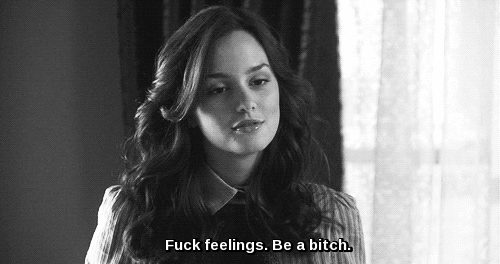
Sorry, no.
Now, we’ve talked a lot about the difference between a Bad Girl Heroine and an Anti-Heroine, but not too much on the difference between an Anti-Heroine and a Villain. And the difference is the balance, the redeeming qualities.
Villains have none. Anti-Heroines do.
The end.

Not good enough? Fine. Be like that. How about a Harry Potter breakdown, everyone cool with that?
Bellatrix Lestrange was a villain. She made bad choices for the wrong reasons, was selfish, cruel, and she’s got the ‘ics: sadistic, narcissistic, psychotic, and more. Her only redeeming quality was . . . nothing. She was loyal, kinda, but only to Voldemort. And she seemed to care for her sister and nephew, but not at the expense of her loyalty to Voldemort. So, yeah, no redeeming qualities.
Now, her sister Narcissa (Lestrange) Malfoy was an Anti-Heroine. Made bad choices for the wrong reasons, is married to a Death Eater, all that. But she loved her son more than her loyalty to Voldemort, and her fight for Draco’s safety, up to and including allowing the deaths of others to selfishly save her and her son, was her redeeming quality.
The Anti-Heroine goes right to the edge of Villain, and at the last moment, the absolutely last moment, has an attack of conscious that ties into their redeeming characteristics and pulls them back.
5. Redeeming Storyline
So the Anti-Heroine has redeeming qualities. Duh, you say. But did you know this: in order for your story to qualify as having an Anti-Heroine and not just a Bad Girl Heroine or a Villain, the story must deal, heavily, with the redemption of your Anti-Heroine.
Let me clarify: You have a MS where the MC is a total badass, is morally questionable and passes the PISS-Off Test.

But at the end of the story, if your MC has resolved all their problems without addressing the issues with their behavior (because the behavior wasn’t really bad enough that it needed to be addressed, it just helped create momentum), you don’t have an Anti-Heroine. You have a Bad Girl Heroine.

Anti-Heroines are bad, bad, naughty girls. And the trouble they cause and the crap they pull doesn’t get off with a slap on the wrist. They can’t just promise never to lie to their boyfriend again. If you want the pride of penning an Anti-Heroine, you can’t be Anti-willing to deal with your character’s deeper-rooted issues, and Anti-willing to then fix them accordingly: so throw ‘em in jail, put them in rehab, make them go to counseling, and have real, serious repercussions that need to be addressed.

And address them.

If you don’t, you either have a BGH, or you have a Villain, because Bad Girls can keep being bad without it ruining the world, and Villains don’t get redeeming storylines. When they do, they become . . . you guessed it! Anti-heroines.
So that’s it! I hope this was of some help to you, and if you’re writing an Anti-Heroine, don’t give up! There are tons of successful romance novels with AHs, there is a market and readership for it, and I know you can strike that balance between toughness and likability. And if you ever doubt that you’re writing a Villain or Bad Girl Heroine because your Anti-Heroine doesn’t quite seem to be straddling the line, just remember that everyone else can PISS-Off!
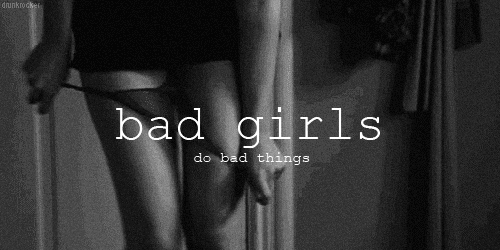
Until next time, Happy Reading!
Xoxo
Katie











